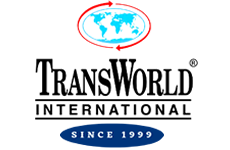The organizations with Commercial Warehousing & last mile delivery operations are facing an increasingly competitive marketplace day by day. They are constantly challenged by customer demands, driver shortages, and adverse economic conditions which are mainly caused by rising fuel prices to changing legislation. These and other few circumstances dictate that companies diligently manage their warehouse management pick-up and delivery processes considering all elements including customer care, driver, vehicle and route management, and service offerings.
We follow some best inherited practices since inception that has led us to what we are today –
1. We put the plan in place – Commercial Warehousing last mile delivery organizations should consider their operations the same way enterprises think about their factory or warehouse operations.We prefer, enterprises typically, should set tightly engineered plans for their production lines and warehouse operations and have specific tools that enable them to benchmark performance against those plans. This helps us stay ahead in the race.
2. Implement technology that fits your business needs–To us a logistics application should offer advanced functionality in a completely integrated solution, providing consistency in reporting and execution, ease of use, and visibility into the entire warehouse distribution process. This would help any logistics company to grow better and stabilize.
3. Establish a standard operating procedure overall – A thorough data analysis opens the door for the development of plans against which performance can be measured. The best running warehouse operational execution delivery operations are those that establish engineered standards for every aspect of the delivery process and that’s what we believe in
4. Know both qualitative and quantitative constraints in the logistics process – Just as every customer has particular warehouse delivery requirements, every business will also have specific ideas with regards to how best to manage & deliver their products or transfer their assets. These requirements may be quantitative or qualitative in nature. When considering a technology solution to assist with the delivery planning process, ensure it is flexible enough to allow for the typical quantitative constraints, as well as the more qualitative business specific requirements and constraints.
5. Measure your customer needs – Measuring or analyzing your customer performance can be a valuable element. Capturing customer history and exceptions, such as dock delays or receiver problems, can highlight delivery problems that are being caused by the customer. Most customers don’t realize that they are the source of delivery problems and with this information, delivery companies can work with their customers to eliminate their problems and ensure better customer service. This is how any logistics company can cut down their margin for error.
Also, due to improper management of warehouse viz. stocks /ageing of products and also proper accounting and inventory management with online information.
Finally when businesses measure their operations against engineered standards, they can implement the operational changes required to increase asset utilization, improve profitability and ensure appropriate levels of customer service.

